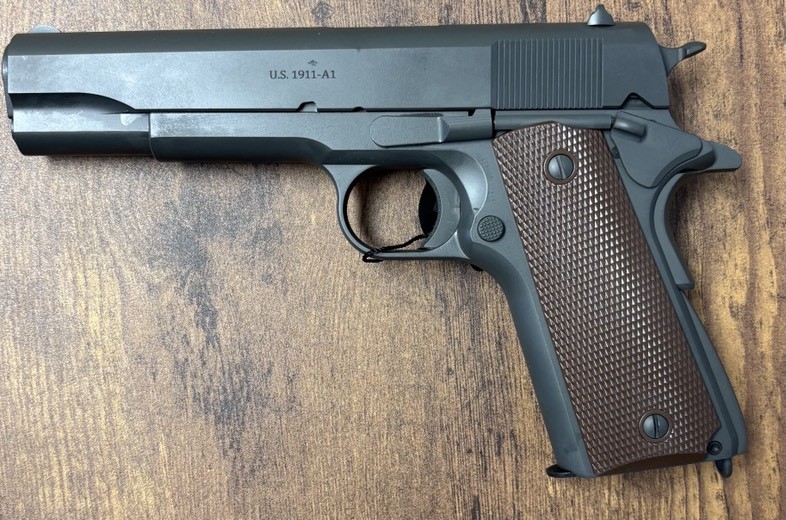Part 1 Staff Sergeant Herbert Hoover Burr United States Army Medal of Honor 41st Tank Battalion
The Army activated the 41st Armored Regiment at Camp Polk, Louisiana, on August 15,1942. Commanding officer was Colonel Thomas N. Stark. The cadre included 53 officers and 382 enlisted men from the 32nd Armored Regiment of the 3rd Armored Division and the 36th Armored Regiment of the 8th Armored Division.
In October, 1942, the 41st Armored began to be filled out with draftees and enlistees. The last of the rookie soldiers arrived on December 5 and joined the Army veterans in a tough 13-week training program.
In mid-March 1943, the 41st Armored joined fellow soldiers of the 11th Armored Division in preparing for large-scale field exercises. Weekly divisional exercises got the men ready for the big show.
From June 23 through August 25, 1943, the regiment and the rest of the "Thunderbolt" division took part in the Third Army's massive Louisiana-Texas exercises. The men trained hard, sharpening skills in river crossings and operating in swampy and densely wooded terrain.
On September 1, 1943, the division left Camp Polk for Camp Barkeley, Texas, where 11th Armored headquarters created the 41st Tank Battalion from the 41st Regiment. The battalion was made up of the 2nd Battalion, plus company A of the Third Battalion of the old regiment. Major Wray F. Sagaser was commander; Major Richard R. Seibel was executive officer.
Another westward migration was in store for the Thunderbolts, who ended up in Camp Ibis, California, for desert maneuvers in the Mojave. The battalion got better acquainted with its squatty Sherman tanks and other vehicles in November and December. In January, the battalion was in mock combat against soldiers of the 95th Infantry Division in the Palen Pass. In Europe, the Thunderbolts and the 95th would team up to knock big holes in German armies on the western front.
On February 8, the battalion was in Camp Cooke, California, where training in weapons firing intensified The armored soldiers practiced tank gunnery buttoned up inside their olive drab painted Shermans. They also learned the principles of direct and indirect firing with all calibers of guns, from 37millimeter anti-tank guns to hard-hitting 105-millimeter howitzers.
After the battalion earned a superior rating from the brass, the men got busy for the trip overseas. Nobody knew where they were going; one day the scuttlebutt said the Pacific, next time it was Europe. Meanwhile, Camp Cooke attracted Army VlP’s including General George C. Marshall, who gave the division an "A1 superior rating".
The Thunderbolt division was almost two years old when it got orders to go overseas in 1944. On August 12, the Army ordered a move to Camp Kilmer, New Jersey. So it would be Europe, Thunderbolts knew for sure now. The 41st Battalion climbed aboard two troop trains which chugged eastward. They arrived on September 16 and 17 for a short stay.
On September 28, the battalion trooped aboard the HMS Samaria for the Atlantic crossing. Nobody knew where the British troopship would dock. Everybody wondered about German U -boats, which prowled the huge ocean in wolfpacks. But the trip was uneventful; the Samaria docked at Liverpool on October 12. From that great seaport, the battalion boarded railroad cars for Longbridge Deverill in Wiltshire and arrived in a few hours.
On October 24, the battalion moved a short distance to Tilshead Barracks. Equipment was processed and sorted. The next stop would be the war zone across the English Channel. Sagaser, promoted to lieutenant colonel, went across to France to observe the fighting first-hand. Also in England, Seibel, another new lieutenant colonel, was transferred to headquarters of Combat Command B and Major John J. Hoffman became the battalion exec. Major. Robert B. Knight stepped up to replace Hoffman as battalion S-3. Both Hoffman and Knight were regular army.
It was cold and raining on December 17 when the Thunderbolts left Wiltshire for the port of Weymouth. Five LST’s carried the men across the channel to Cherbourg at the tip of the Cotenin Peninsula. By December 20, the 41st Battalion was ashore. From Cherbourg, the men went to Bameville, a resort town.
The 41st Battalion had orders to be ready to move on a moment's notice. News from the southeast was bad. In the Ardennes Forest, the Nazis had attacked on a 50-mile front. German panzer divisions overran several First Army positions in a desperate attack the enemy hoped would save the Third Reich or prolong the war. The attack drove a deep pocket in the Allied lines; the struggle would be called the Battle of the Bulge, the bloodiest fight in U.S. Army history.
On December 22, the battalion began a 500 mile trek across France. via Falaise, Damville, Mantes, and Paris. The tankers rolled into Soissons on December 24. There was more news: the Thunderbolts learned they were part of Lieutenant General George S. Patton's Third Army.
It was the holiday season, but there was little time to celebrate. Tank crews worked against the clock installing track extensions on most of the Sherman tanks. Christmas was a work day, with a break for religious services and Christmas dinner.
Shortly after midnight on December 25, the battalion moved on to Laon and Poix Terran. The Germans were using saboteurs dressed as Gl’s and French civilians, so all strangers entering battalion areas were checked closely.
On December 29, the battalion was on the move again, drawing closer to the battlefront at Longliers, Belgium. "Even at this late date some of us still couldn't conceive what was in store for us." a veteran Thunderbolt recalled. "That night comic books still held more fascination for us than strategic maps."
The 41st Battalion was pan of CCB of 11th Armored. The battalion, designated Task Force Poker on December 30, got its first combat assignment: destroy enemy positions at Lavaselle. The attack was a success. The Shermans and supporting infantry swarmed into the town, capturing 125 Nazi soldiers.
The Germans counterattacked with infantry and mortar and artillery fire, but the Thunderbolts held firm. Their baptism of fire had been costly: 4 killed, 15 wounded, 33 missing in action and 13 Shermans destroyed or disabled.
Fighting was hard around Lavaselle into the New Year as the battalion joined tank-infantry-artillery-air assaults on German positions. CCB blasted into Mande St. Etienne on January 2. There were German troops still holed up in the town, but the enemy shelled it anyway. Even so, German artillery failed to dislodge the Thunderbolts.
In mid-January, the battalion moved to Bercheaux for some rest and relaxation. All vehicles were whitewashed for better camouflage in the snow that blanketed the wintry terrain.
The weather was getting worse Roads were icy or sticky with mud. On January 12, the battalion was ordered to Villerous and Luzzery, just northeast of besieged Bastogne. If the 101st Airborne
Division and other army units could somehow hold encircled Bastogne, the German drive in the Ardennes would fail.
Renamed Task Force Black-Jack, the 41st Battalion attacked Corbu. It fell, as did nearby Noville. The Thunderbolts pressed ahead toward Houffalize. Enemy resistance was strong, but not strong enough to stop the 11th Armored Division. On January 17, CCB and CCA closed on their objectives south of Houffalize. The 17th Airborne Division relieved the Thunderbolts and the 41st battalion moved to Hemouroulle, Belgium, for maintenance and rest.
On January 24, the battalion moved into Corps reserve at Bercheux, Belgium, and stayed until February 6 with other 11th Armored units. It was the first real break since the Thunderbolts went into battle in December.
It was also time to reward Thunderbolts for heroism. Brigadier General Charles S. Kilburn handed out battlefield commissions and medals, Silver Stars and Bronze Stars were pinned on the field jackets of many men.
Continue Reading Part 2: https://www.colmikehoward.com/article/Part+2+Staff+Sergeant+Herbert+Hoover+Burr+United+States+Army+Medal+of+Honor+41st+Tank+Battalion









